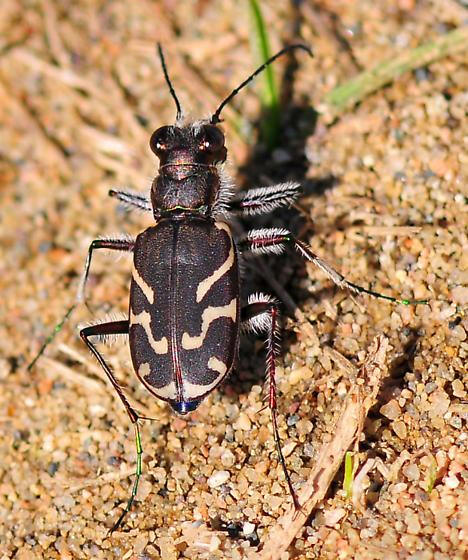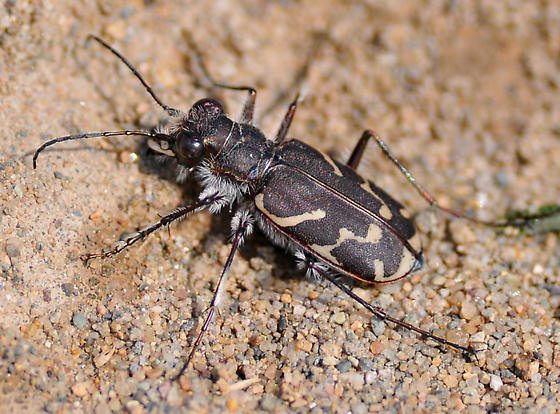Habitat
The oblique-lined tiger beetle makes its home in a large range of territory, covering almost the entire continental United States and the southern territories of Canada (Acorn 2001). Within this range, the beetle can be found in a variety of places. It burrows, making itself some temporary lodging, in mudflats, claybanks, sand dunes, blowouts, salt flats, sparse prairies, and vacant lots (Acorn 2001). The most common soil, however, to find one in is sandy clay soil (Acorn 2001).
According to John Acorn of the University of Alberta, the oblique-lined tiger beetle species is broken into two geographic races. Those of the northern race have thinner, lighter markings on their backs, and they are called the borealis. The southern race, with its broader, darker markings, is referred to as the kirbyi (Acorn 2001).
Photos by Denis A. Doucet
Nutrition
The adult oblique-lined tiger beetle is a primarily predatory insect. It feeds on small creatures, but also occasionally takes the role of scavenger, taking bites of dead insects or small vertebrates (Acorn 2001).
As larvae, the beetles are also predatory, hunting as ambush predators (Mury Meyer 1987). However, life is a bit more difficult for them. During the time period that Cicindella tranquebarica is in its larval stage, food is much more limited and competition is much greater (Mury Meyer 1987). So, to avoid competition with close relatives, different species of tiger beetles develop in a way that separates their most successful preying period. This was illustrated by a study done by Elizabeth J. Mury Meyer in 1987. It was discovered that Cicindella tranquebarica was most successful during its second instar, or after its first molt (Mury Meyer 1987). Cicindella punctualata, its close relative, is most successful during its third instar, reducing resource competition for both species (Mury Meyer 1987).

